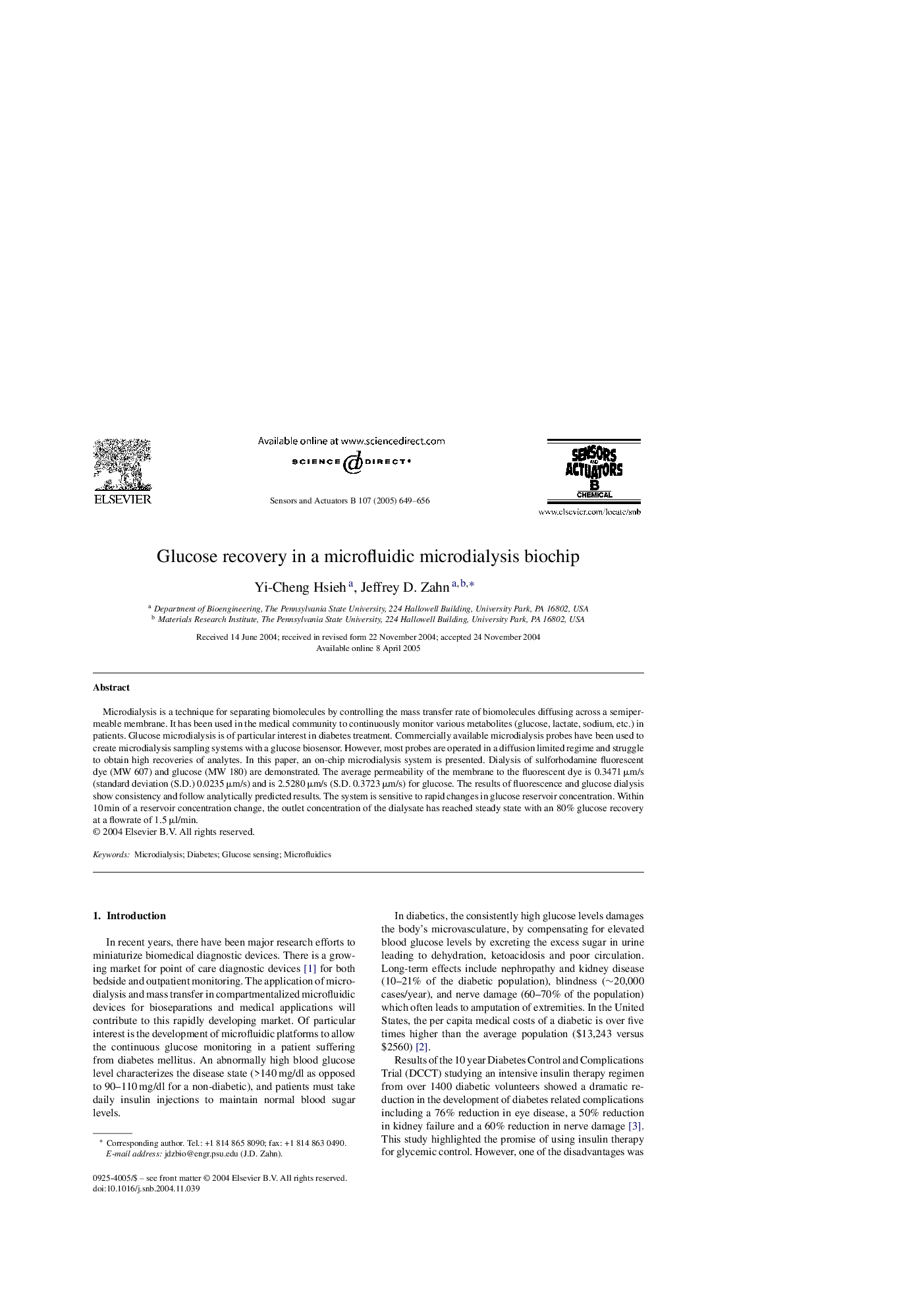| Article ID | Journal | Published Year | Pages | File Type |
|---|---|---|---|---|
| 10410902 | Sensors and Actuators B: Chemical | 2005 | 8 Pages |
Abstract
Microdialysis is a technique for separating biomolecules by controlling the mass transfer rate of biomolecules diffusing across a semipermeable membrane. It has been used in the medical community to continuously monitor various metabolites (glucose, lactate, sodium, etc.) in patients. Glucose microdialysis is of particular interest in diabetes treatment. Commercially available microdialysis probes have been used to create microdialysis sampling systems with a glucose biosensor. However, most probes are operated in a diffusion limited regime and struggle to obtain high recoveries of analytes. In this paper, an on-chip microdialysis system is presented. Dialysis of sulforhodamine fluorescent dye (MW 607) and glucose (MW 180) are demonstrated. The average permeability of the membrane to the fluorescent dye is 0.3471 μm/s (standard deviation (S.D.) 0.0235 μm/s) and is 2.5280 μm/s (S.D. 0.3723 μm/s) for glucose. The results of fluorescence and glucose dialysis show consistency and follow analytically predicted results. The system is sensitive to rapid changes in glucose reservoir concentration. Within 10 min of a reservoir concentration change, the outlet concentration of the dialysate has reached steady state with an 80% glucose recovery at a flowrate of 1.5 μl/min.
Related Topics
Physical Sciences and Engineering
Chemistry
Analytical Chemistry
Authors
Yi-Cheng Hsieh, Jeffrey D. Zahn,
